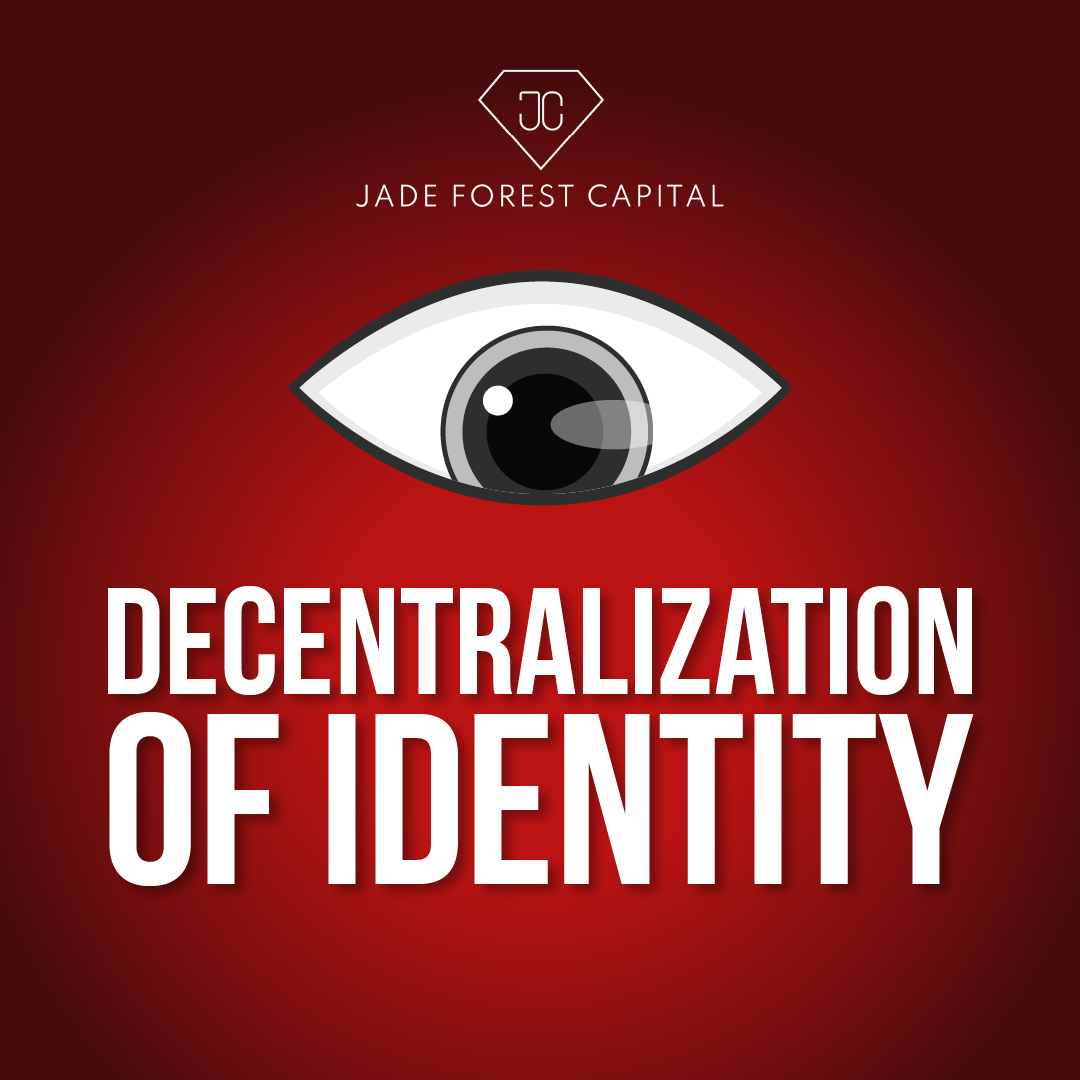Many people are familiar with the Polkadot ecosystem, but some still cannot understand the terms of DOT. Polkadot has climbed to 11th place in the cryptocurrency rankings (previously ranked 5th). Several ecosystems have been banned from DOT’s parachain, so learning about DOT will take a lot of time. Jade Forest Capital will provide some information about Polkadot to give you a better overview of this ecosystem.
- Introduction to Polkadot

Polkadot was released in October 2016, by Gavin Wood, co-founder of Ethereum. His most notable achievements include the invention of the smart contract Solidity programming language and the launch of Ethereum. He is also the founder of the Web3 Foundation.
Polkadot’s whitepaper contains a lot of material from Gavin’s initial research on how to scale and overcome Ethereum’s flaws.
- What is Polkadot?
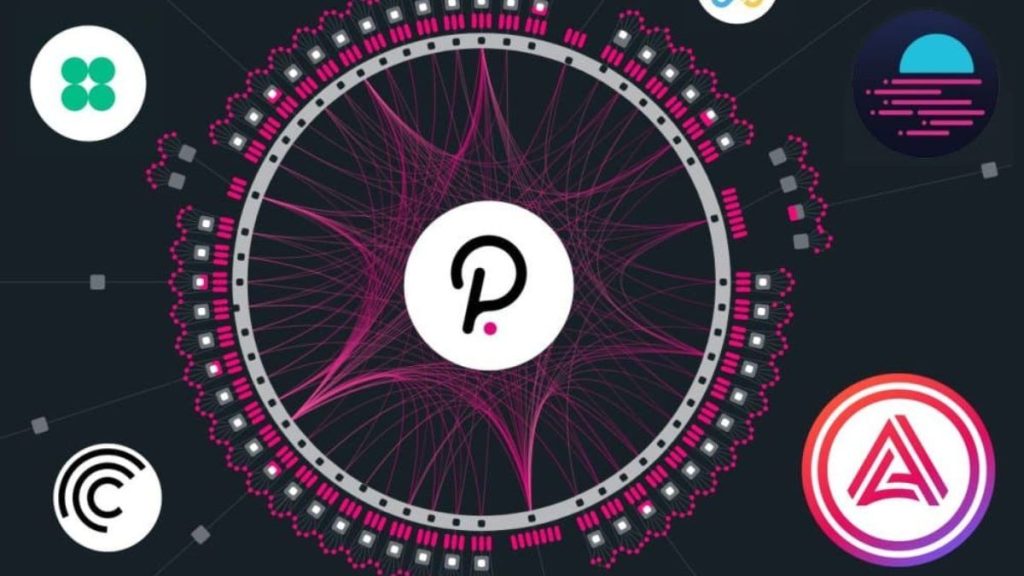
Polkadot is a multi-chain with interoperability that allows blockchains to be extended together. Current blockchains are often less scalable and require a bridge to transfer assets and information. For example, information cannot be transferred from the Bitcoin blockchain to the Ethereum blockchain.
Polkadot, on the other hand, functions as a “Super protocol” as the platform finds a way to connect all blockchains so that they may process information in parallel via Relay-chain (will be explained later). Polkadot’s objective is to be a blockchain of blockchains. A Layer-0 solution connects all Layer-1 blockchains (e.g. Bitcoin and Ethereum) and their applications (e.g. ERC-20 tokens).
Polkadot supporters refer to this idea as the “blockchain of the blockchains,” and it can be viewed as the “consensus enforcer”.
- What is substrate programming language?
Substrate is a modular framework used to build blockchain projects. Polkadot’s substrate development framework can be regarded as a ready-made Polkadot house design. Developers can use it to quickly build their own houses (Dapp, Smart Contract, MarketPlace, etc.)
Developers can build an entirely new blockchain on substrate. Furthermore, substrate supports a number of pre-built models from which developers may easily fork into their own version of blockchain.
Substrate of Polkadot also gives application developers more options for customizing and optimizing blockchain for various purposes such as Defi, Private, Stablecoins, Oracles, Liquidity, and so on. It also enables these chains to be adapted to the demands of developers. For example, if substrate (EVM) is compatible with Ethereum, then Ethereum dapps can be compatible and built directly on the blockchain of Polkadot.
- How does Polkadot achieve this?
Let’s have a look at Polkadot’s structure to see how it works. It’s basically a chain of blockchains connected to an underlying layer. Chains that link together will be called “parachain” (short for parallel chains). All blockchains plug into Polkadot and that plug is called Relay-chain
For example: Imagine the Relay-chain is the heart of a hedgehog and its spines are likened to the parachains.
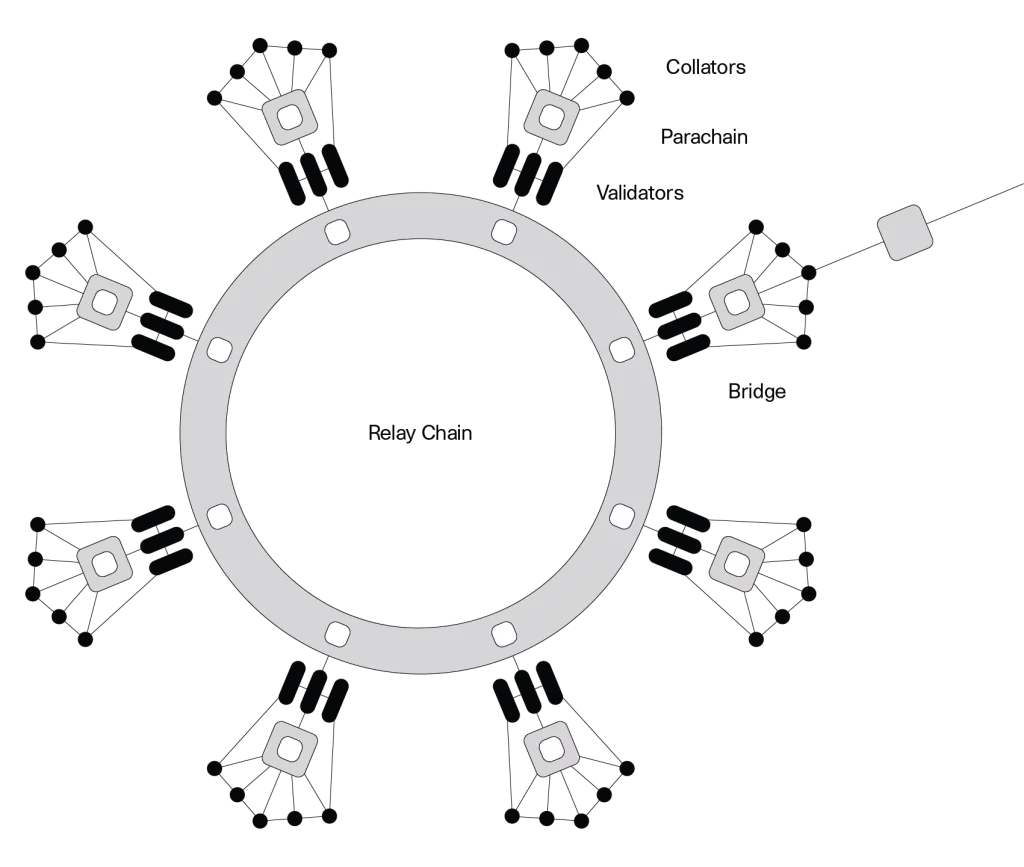
Relay-chain is considered the heart of the Polkadot ecosystem. It is a secure Layer-0 with validators to manage Polkadot validators and coordinate security for active parachains. Relay-chain is not a smart contract and does not support application development. Instead, the Replay-chain is primarily focused on security, interoperability, and governance.
Security: All validators in Polkadot’s POS system are managed by Relay-chain. If someone uses a DOT for auction, they are putting their DOT in the Relay-chain. Polkadot’s validator will assist in the security and processing of transactions for the core and active layers. Parachain is essentially hiring Relay-chain to secure these validators and distributors. Instead of starting a fully secure validator, the Relay-chain system provides partial security to parachain .
Interoperability: The Relay-chain will also serve as the primary communication layer for all parachains. It will identify and validate information transferred between various parachains in exchange for fees. Relay-chain, for example, is a bridge between blockchains.
Governance: Relay-chain contains the governance system on the Polkadot chain. All Polkadot proposals and Dao-approved changes will be processed on Relay-chain. While each parachain has its own governance system, decisions made by the primary governance layer (Relay-chain) might have an impact on previously linked chains, and the parachains will be active participants in Polkadot’s governance system.
- Parachain:
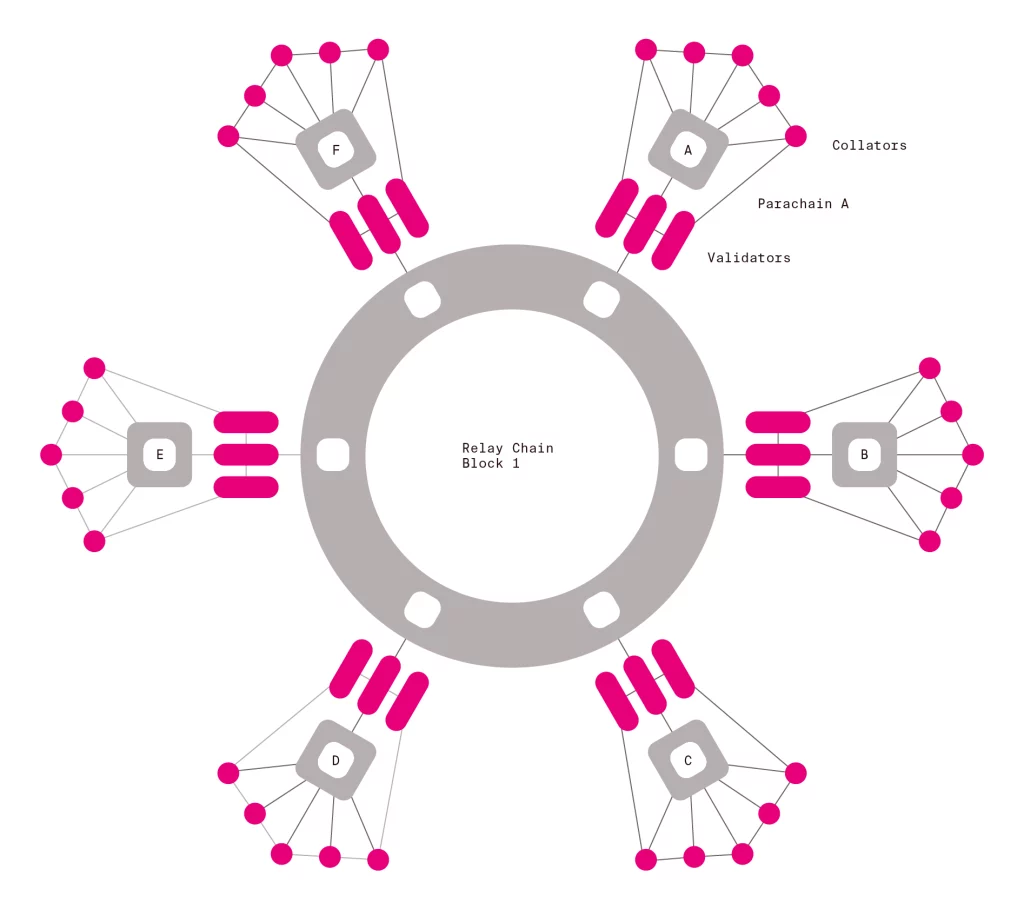
According to the most recent Polkadot information, there may be more than 100 different parachains that can connect to Relay-chain. These strings are divided into two categories:
- Layer-1 chains: Each parachain enables project developers to apply fundamental features on their projects. Furthermore, parachain, like Ethereum, can provide a distinct blockchain. Because the Relay-chain lacks a smart contract, parachains on Polkadot are regarded as ecosystems that play a significant part in the development of their products on the PolkaDot blockchain. Positions on the parachain will be auctioned and approved via a ranking method. Each parachain will function similarly to a separate blockchain.
- Commodity chain: This chain is also known as a bridge to existing Layer-1 networks, including public and private blockchains. These “common commodity chains” will be given for free for parachain positions on the Polkadot ecosystem. Interlay, for example, is the bridge between BTC and Polkadot. Therefore, Interlay can be considered as the common commodity chain on Polkadot, as well as Polkadot’s bridge to BTC.
Projects looking for the parachain slot must compete by bidding for the parachain position on Polkadot. Unlike other Layer-1 blockchains, parachains do not require the investment of time and money to set up a validator that is safe enough to resist low-cost attacks. Furthermore, owing to the Relay-chain, projects can easily develop and build their own blockchain without having big upfront expenditure for investigating stability and security issues.
Parachains can communicate and exchange information with each other using Relay-chain as a router thanks to Chainlink’s technology by sending requests of parachains to Chainlink’s oracles via Relay-chain.
- Parathreads:
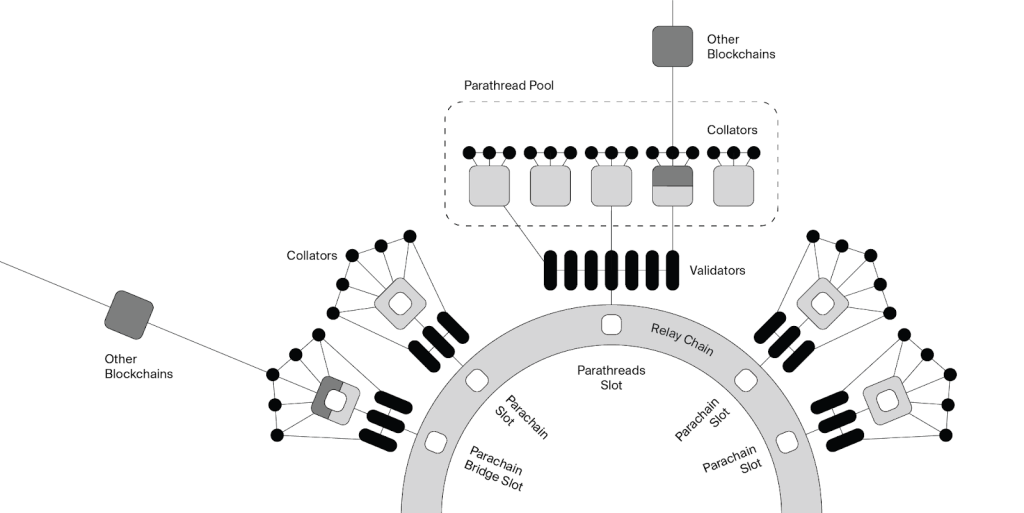
Parathreads are understood as children of parachain with the responsibility of sending information from the parachain chains to the Relay-chain at a fixed cost. Because parachains are used for Pay-As-You-Go transactions, it is less expensive than auctioning a parachain position.
For example, parachain is a weather company and it needs to check the rainfall in September. Then it hires a team to measure the September rainfall and doesn’t need to measure the other months’ rainfall. Parathreads is a team that measures September rainfall.
This can be understood that Relay-chain is the hedgehog’s heart, parachains are the spines and parathreads are the furs on each spines.
- DOT use case:
The current DOT does not limit the total supply. Some notable use cases when participating in buying tokens are:
Auction: You can use DOT to participate in parachain auctions. The DOT you used for the auction will be unlocked and returned if the projects do not become parachain. If the project is successful, it will lock your DOT and pay you tokens quarterly as an incentive for token locking.
Staking: This is important to Relay-chain consensus. Stakers can bet the DOT for a chance to mint new blockchain on Relay-chain or stake on major exchanges like Binance, Coinbase to bypass difficult problems.
Gas: DOT will be paid to transfer data to Relay-chain. This will be done in parachain’s native tokens.
Governance: DOT holders have the right to directly vote on upgrades, changes, auction rules, etc.
- Tokenomics and burn:
As mentioned, Polkadot has no total supply. The Polkadot network will pay a permanent reward to stakers for running the node and ensuring high costs in the event of a direct attack on the Relay-chain. There is 10% annual inflation available to stakers and validators for contributing resources to the network’s security. Unconfirmed new issuance will be forwarded to the treasury.
Token burn: Any treasury that is not spent within 24 days will be burned. The amount burned is equal to 1% of the total treasury. Furthermore, any stakes associated with a rejected governance proposal will be burned.
- What is Kusama?
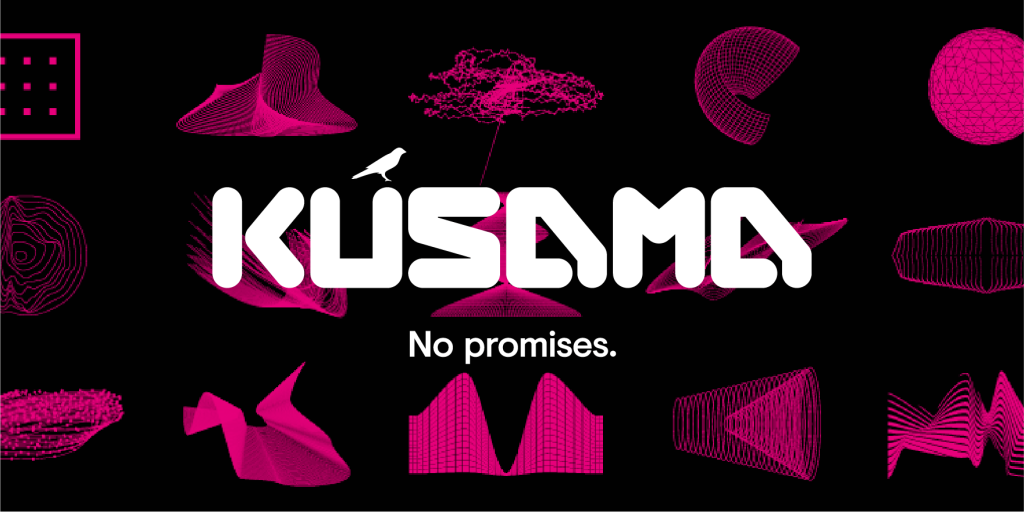
If Polkadot is a school, then Kusama is the entrance test for you to enter the Polkadot school.
Kusama is also a specialized blockchain built by substrate and is similar to Polkadot. Kusama is a blockchain network that enables the development of features that detect faults and problems before entering Polkadot. In other words, you must pass Kusama’s test to enter Polkadot’s parachains.
Polkadot chose an intermediary between the testnet and the mainnet because governance and voting are unclear in a worthless testnet. Polkadot aims to be unaffected as testnet results are always heavily censored.
Because these two ecosystems are also connected, two tokens from the same project will have distinct names to avoid confusion.
- Cross-Consensus Message Format (XCM)

According to the Polkadot roadmap, XCM is still being developed to format Cross-Consensus Message (XCM), with the goal of becoming the consensus language of all parachains on Polkadot and KSM. It is a standard that enables protocol developers (parachains) to specify the data and origin from which other chains can send and receive.
- Roadmap
Polkadot is currently in the third quarter of 2022, and this time will be focused on developing Cross-Consensus Message Format (XCM) to stimulate the community and attract new users. In addition, new releases will be focused by Polkadot on governance, parachain, support for upgrading asynchronous blockchains, and parathreads.
- Through this article, Jade Forest Capital provides you with information about Polkadot and Kusama. The above information is expected to help you better understand the Polkadot network and DOT Coin.

